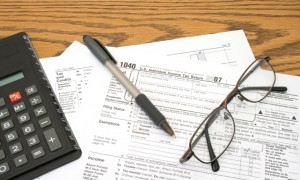By Robert L. Cain
How much money are you costing yourself? I don’t mean in lost rent or vacant units. I’m talking about on your taxes. Most residential investment property owners divide the cost of their real estate between land and building, then depreciate the building over 27.5 years in equal installments. If that’s all you do, you are most likely leaving a big wad of money on the table.
Not every part of your rental property is real estate. You have a host of other property that isn’t real estate and that can be depreciated over a much shorter period of time. Plus, there is a provision of the tax law that allows you to deduct a huge portion and possibly the entire income from one or more of your properties.
Look at the depreciation schedule below from Internal Revenue Service instructions.
- Refrigerators, ranges, dishwashers, carpeting, furniture – 5 years
- Land improvements (sidewalks, fences, landscaping shrubbery, septic systems, water pipes) – 15 years
- Computers and peripherals – 5 years
- Typewriters, adding machines, copiers – 5 years
- Automobiles and trucks under 13,000 lbs. – 5 years
- Carpeting—5 years
- Office furniture (desks, chairs, file cabinets, etc.) – 7 years
- Residential rental property building – 27.5 years
- Non-residential rental property – 39 years
In addition, there are numerous other items that you can find at irs.gov
You are allowed by law to separate all of these pieces of property from the value of the building and depreciate them individually on IRS Form 4562. That can make or save you thousands of dollars a year on your taxes.
But there is one more deduction that could even mean a free vehicle for your rental property business. It is the Section 179 deduction
The total amount you can elect to deduct under Section 179 for most property placed in service in 2013 generally cannot be more than $500,000. If you acquire and place in service more than one item of qualifying property during the year, you can allocate the Section 179 deduction among the items in any way you want, as long as the total deduction is not more than $500,000. You do not have to claim the full $500,000. Qualified real property that you chose to treat as section 179 real property is limited to $250,000 of the maximum deduction of $500,000 for 2013.
A likely Section 179 deduction for rental owners might be a new vehicle. The IRS explains it as follows:
Many vehicles that by their nature are not likely to be used for personal purposes qualify for full Section 179 deduction including the following vehicles:
- Heavy “non-SUV” vehicles with a cargo area at least six feet in interior length (this area must not be easily accessible from the passenger area.) To give an example, many pickups with full-sized cargo beds will qualify (although some “extended cab” pickups may have beds that are too small to qualify).
- Vehicles that can seat nine-plus passengers behind the driver’s seat (i.e.: Hotel / Airport shuttle vans, etc.).
- Vehicles with: (1) a fully-enclosed driver’s compartment / cargo area, (2) no seating at all behind the driver’s seat, and (3) no body section protruding more than 30 inches ahead of the leading edge of the windshield. In other words, a classic cargo van.
So how does that work? I would not begin to try to explain it. That’s a job for tax experts. So don’t take my word for this because I am not an accountant, and I know there probably is some fine print that we need to pay attention to. Section 179, though, can and has offset thousands of dollar in rental income for many rental property owners. So if you bought a $40,000 pickup for your rental business, that has the potential to offset $40,000 in net rental income. Don’t have that much rental income? Ask your accountant how to spread it out over the five years that you are entitled to depreciate it along with the Section 179 deduction.
Think about the things you bought for your rental properties in 2013. How many of them can be depreciated? How much money is just sitting there on the table waiting for you to snatch it up? Ask your accountant or expert tax preparer. It’s our right to take as many deductions as the law allows.

